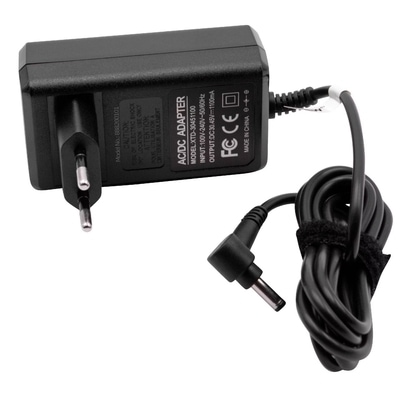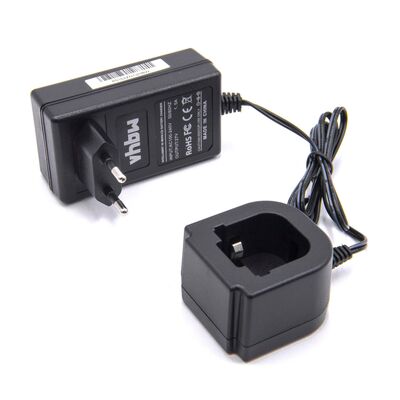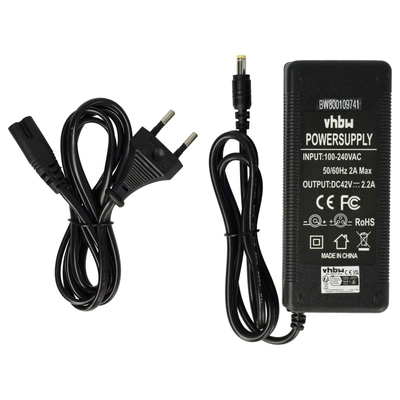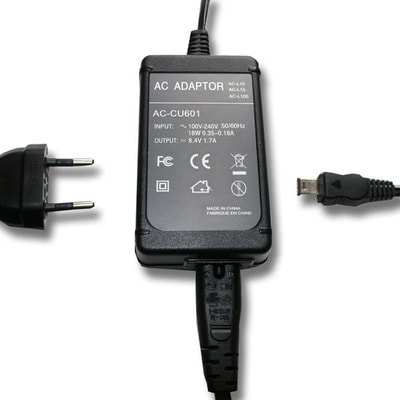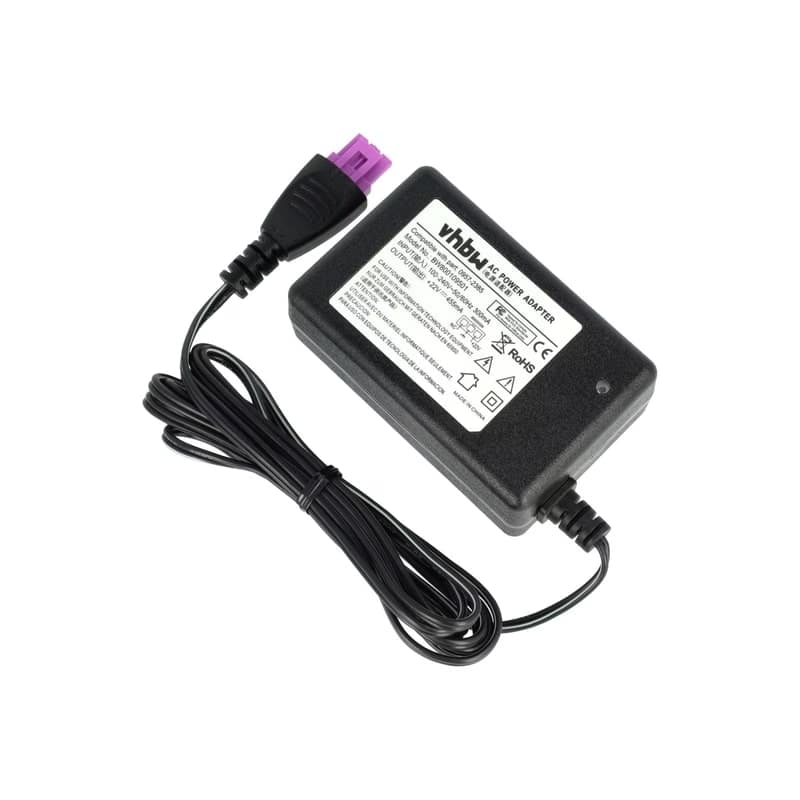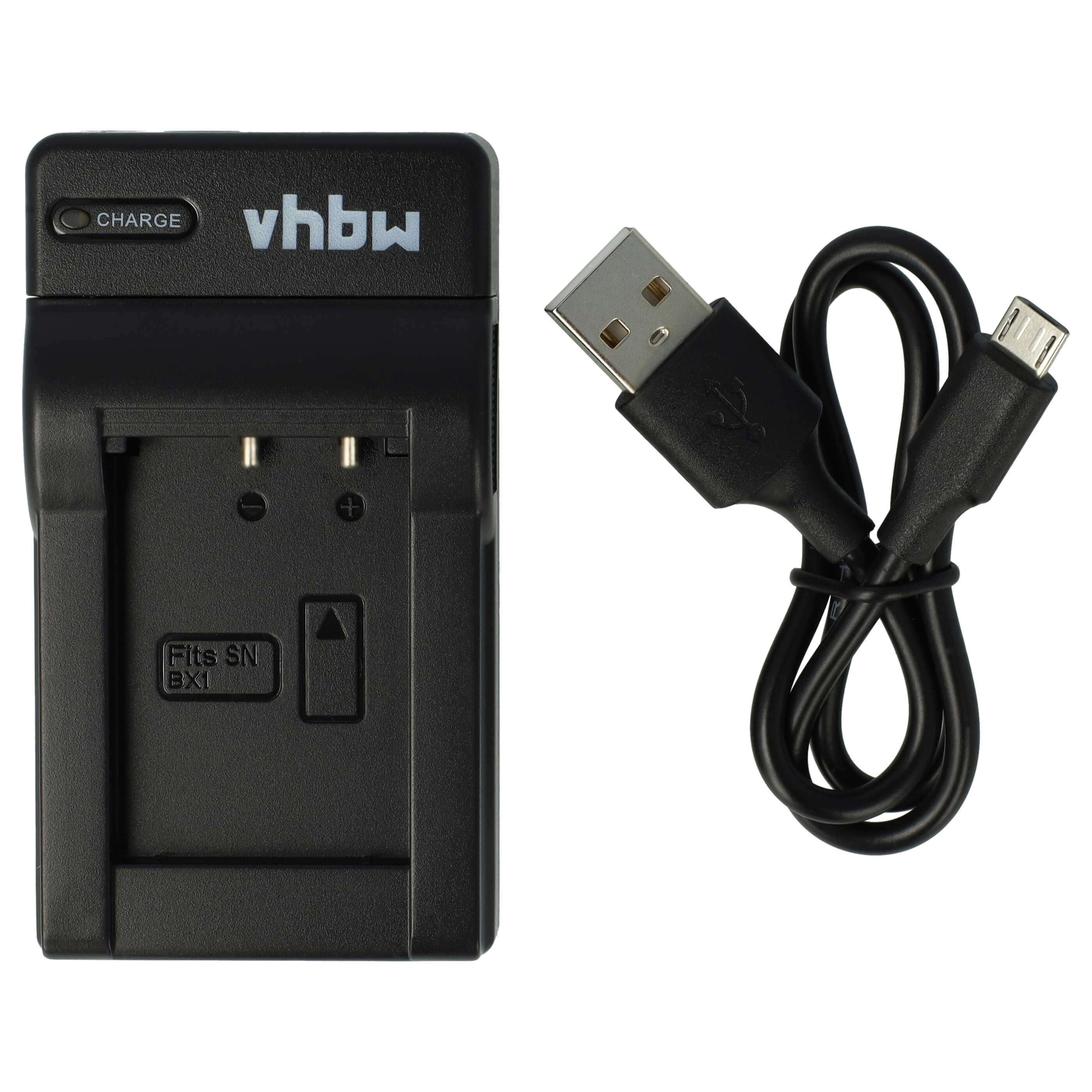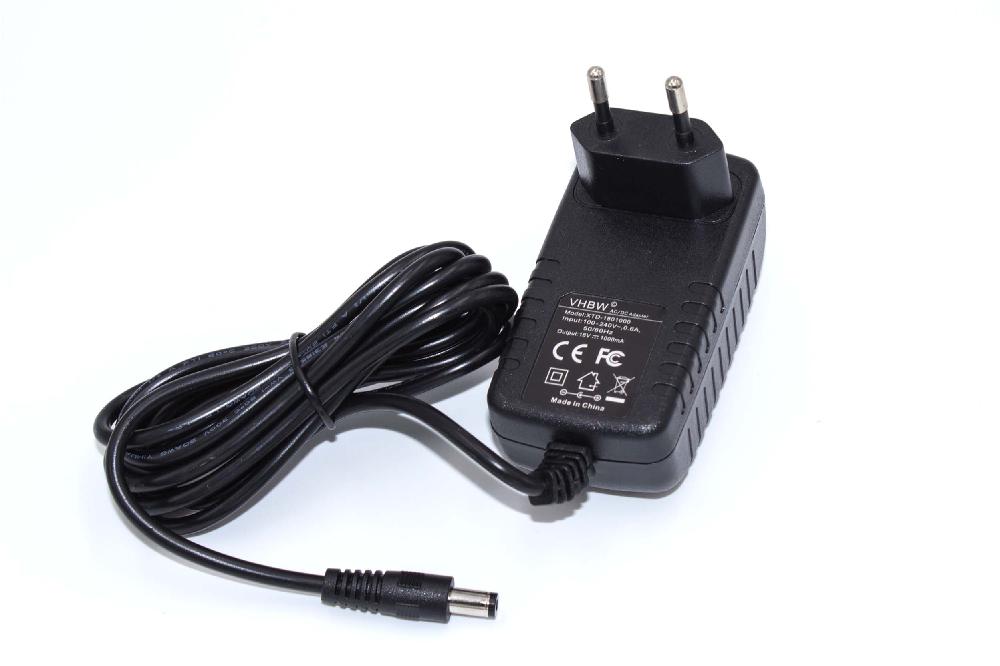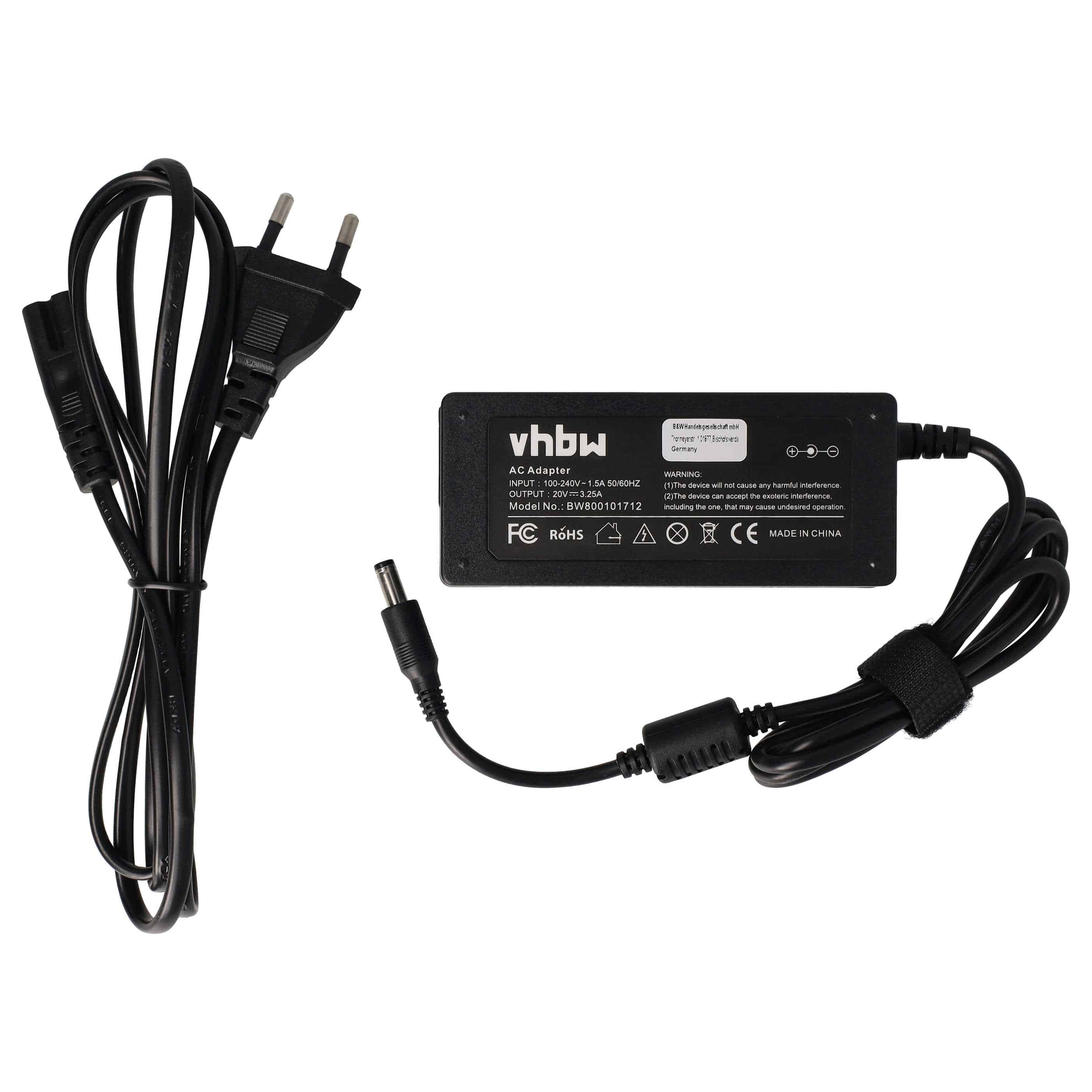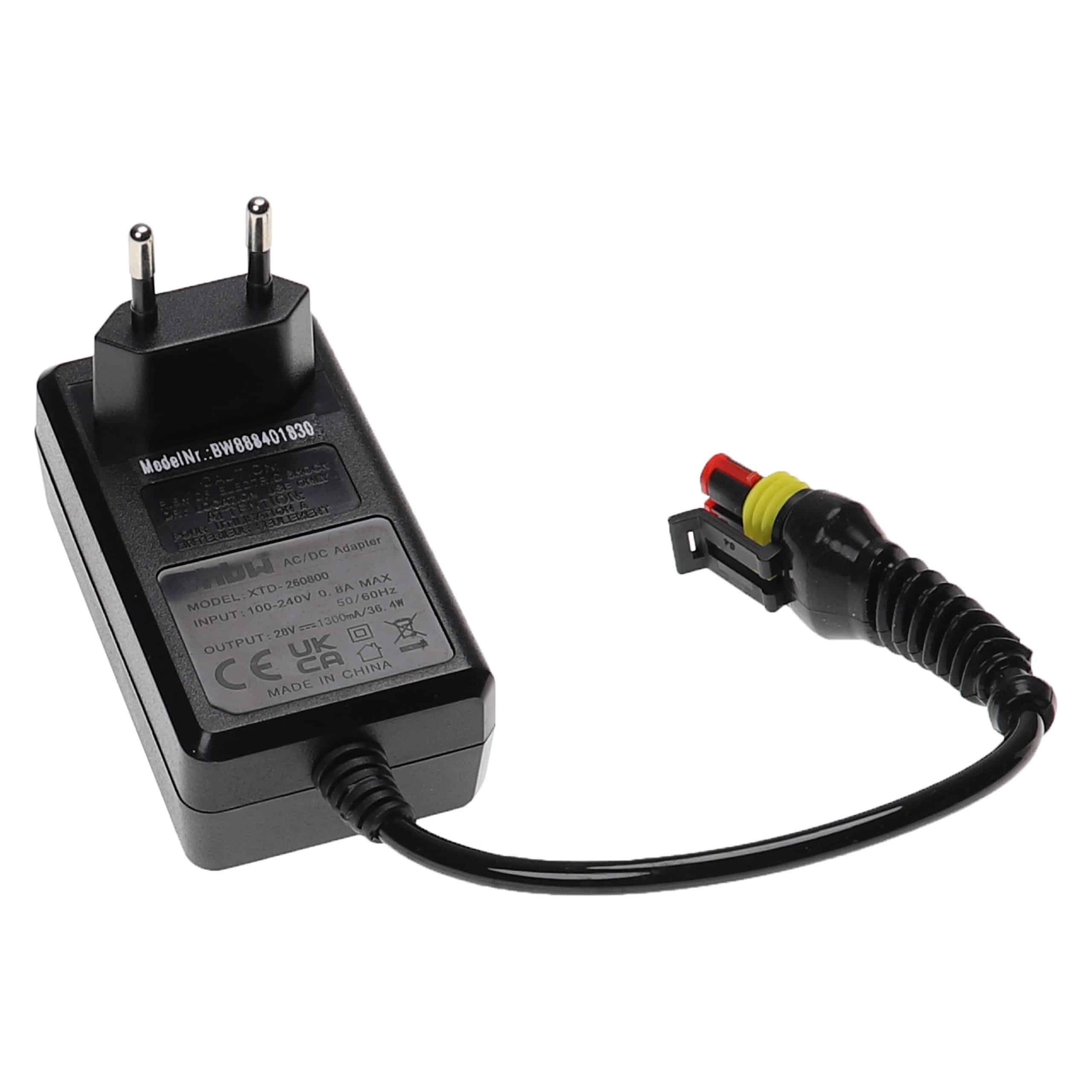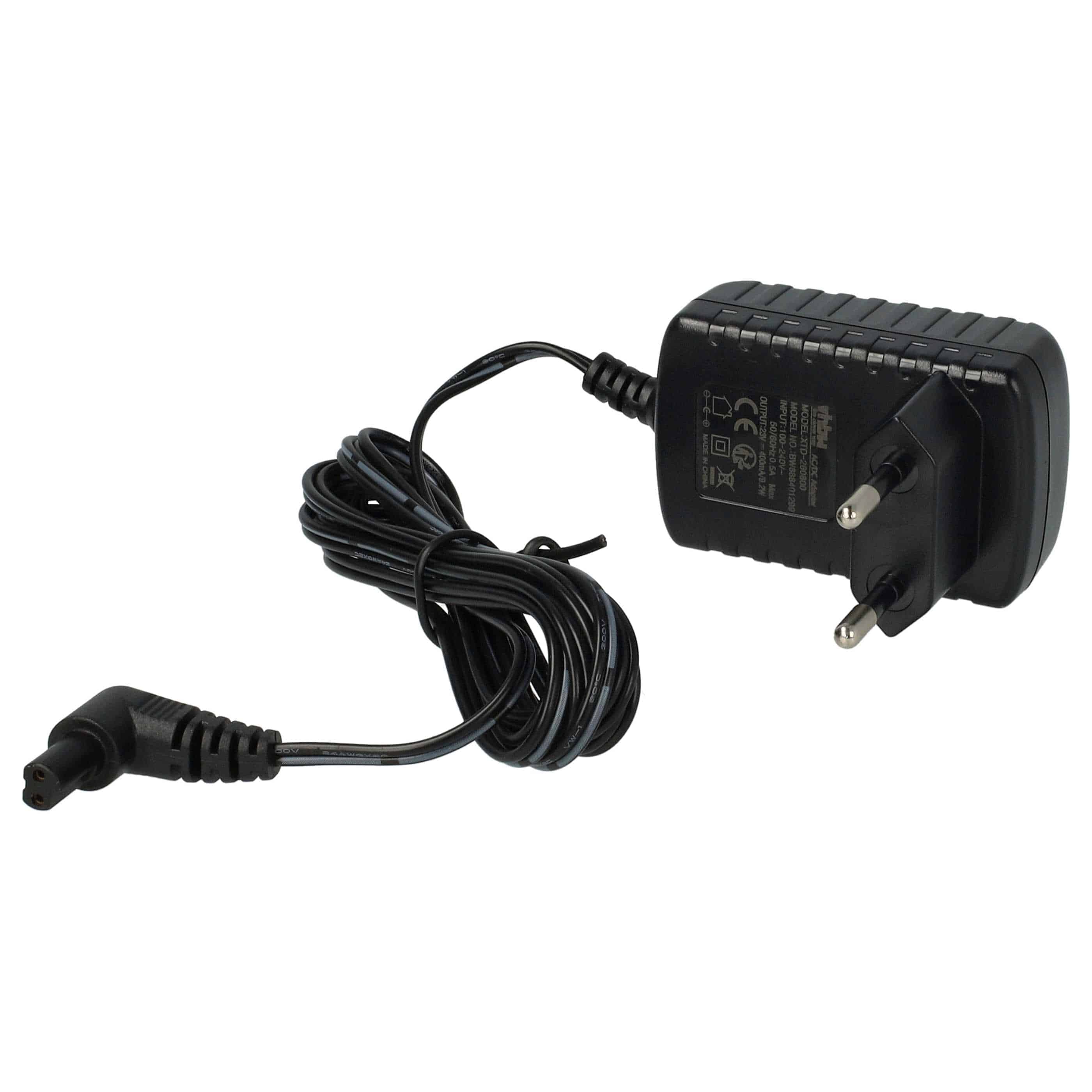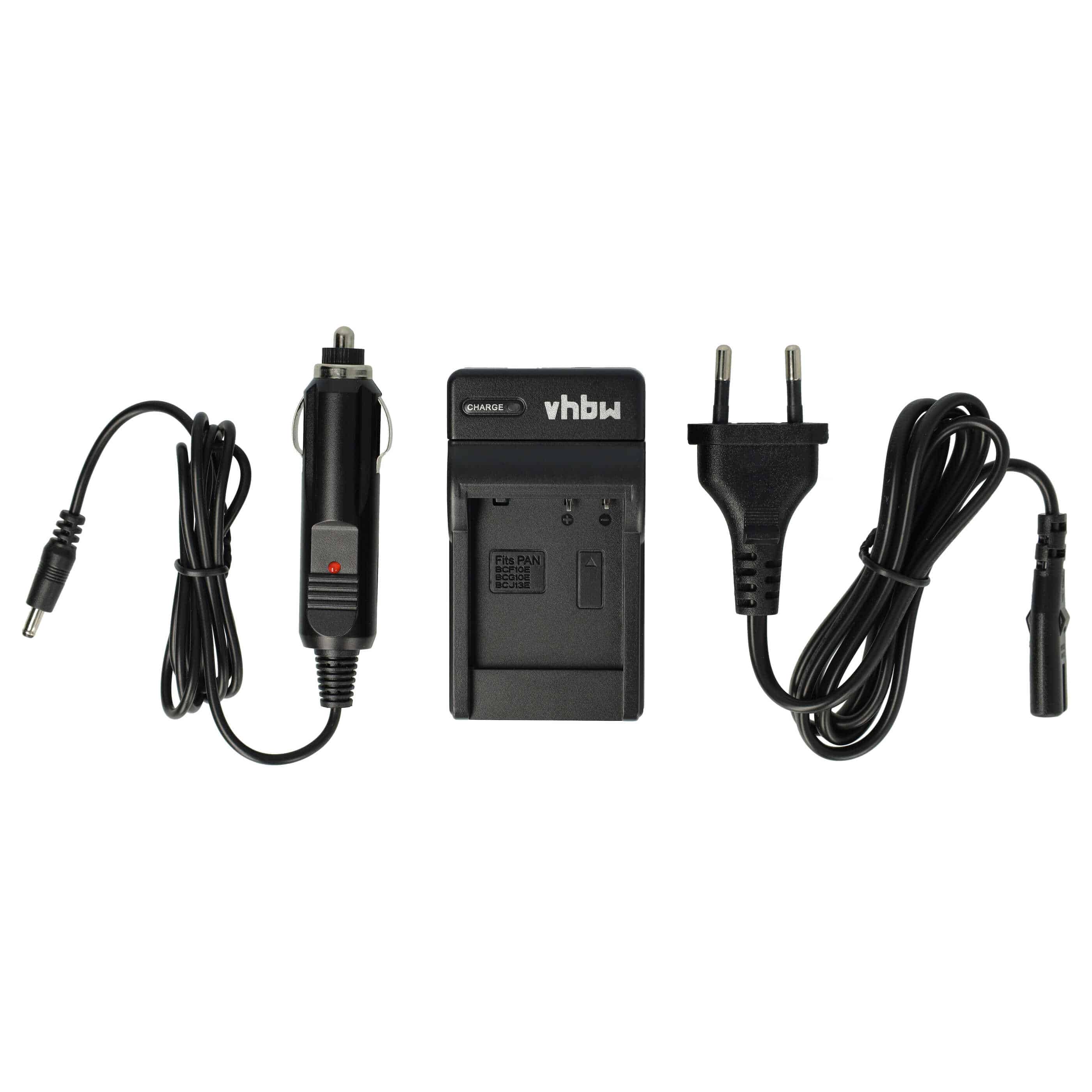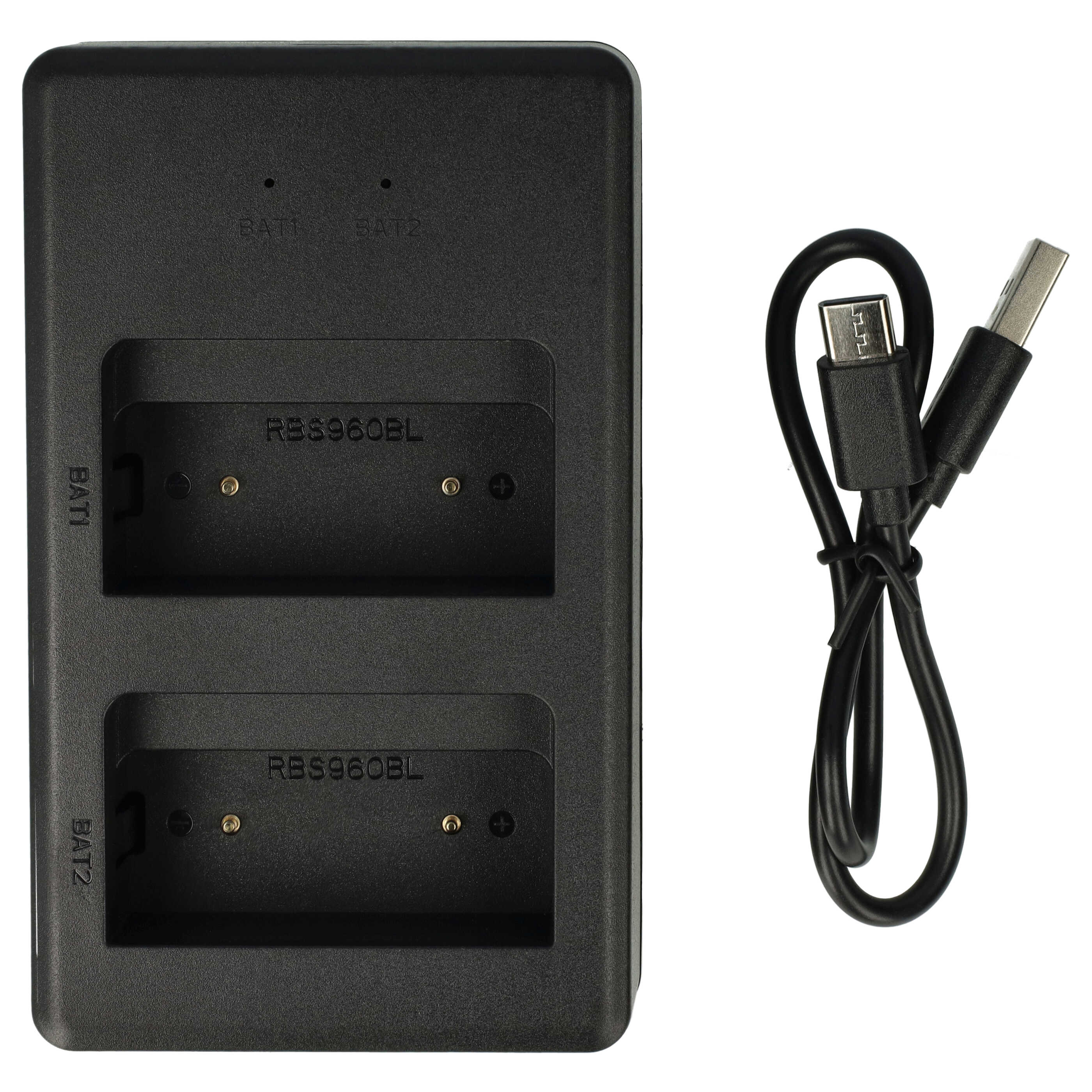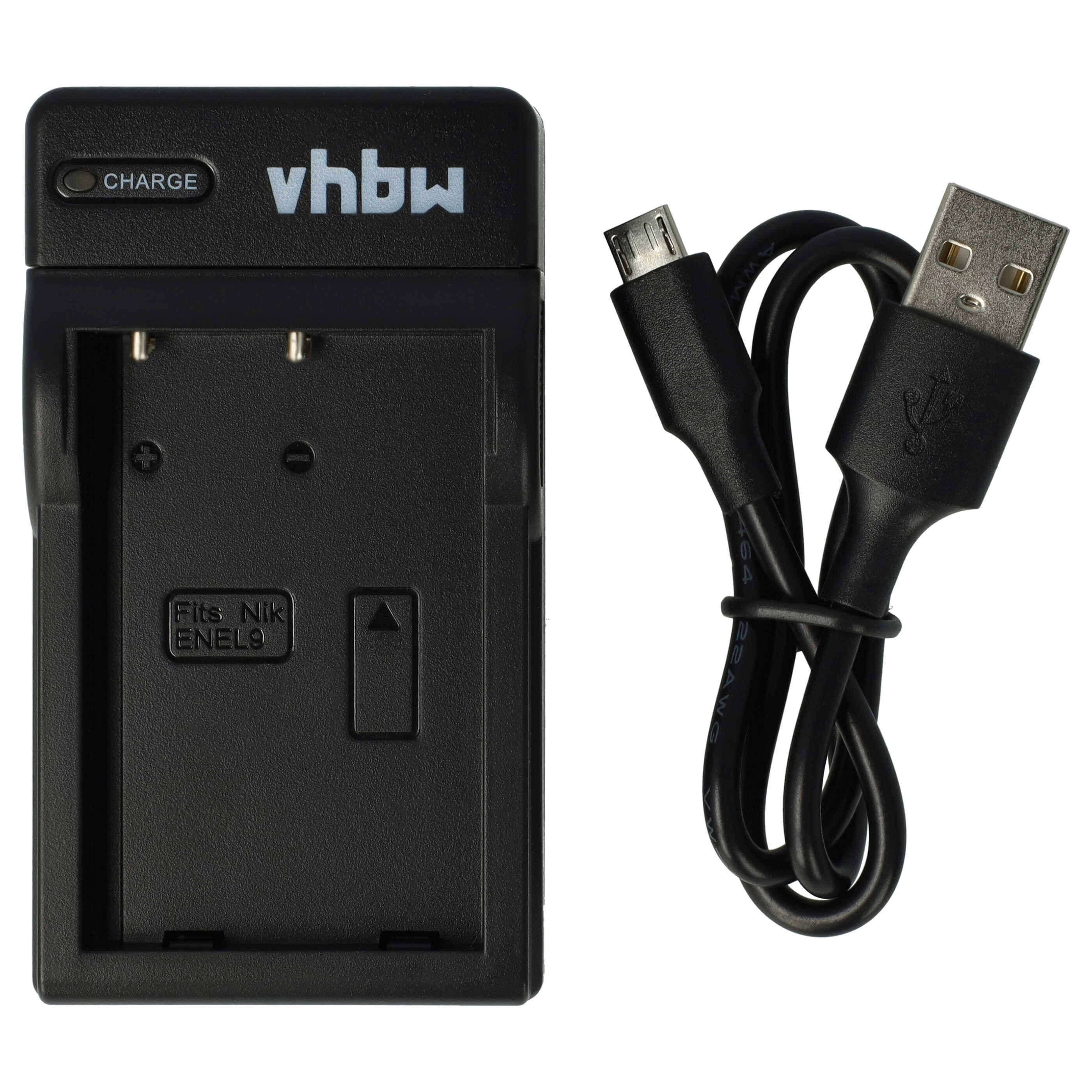Chargers & Power Supplies
Power supply units, chargers, and USB chargers all serve as a source of energy for our everyday electronic devices and are thus indispensable in any household. These energy suppliers can be used even while travelling if a connection is available. This means you can be connected at any time and from any location, allowing you to reap the benefits of your electronic companions not just at home. It is not surprising that the power supply and charger are prone to defects due to the daily rigours that they are subjected to.
Top Seller
If you want to see if the charger or power supplies is broken, simply connect it to the electronic device. After half an hour, if the power supply or charger has developed heat, the current is flowing and the part is operational. If it remains cold, there is a problem, and you should replace the charger or power supply right away.
Camera, radio, phone, printer, computer, baby monitor, electric bicycle...
Every home has a number of electronic devices that are frequently used multiple times per day. The battery and charger are always included when purchasing electronic devices. When a spare part is required, however, many users are overwhelmed and simply rely on the manufacturer's original products. Because branded products are expensive, you will have to dig deep into your pocket for this. Electropapa has a huge selection of replacement products for a wide range of devices. Quality does not have to be costly.
We provide a high-quality:
- Vacuum cleaner chargers
- E-bike chargers
- Walkie Takie chargers
- Mobile Phone chargers
- Audio Device chargers
- Camera chargers
- Notebook chargers
- GPS chargers
- Power tool chargers
- and more chargers.
But also:
- Printer power supplies
- Razor power supplies
- Gaming console power supplies
- Audio device power supplies
- and more power supplies.
What is the distinction between a power supply and a charger?
The distinction between power supplies and chargers is easily explained. They differ in terms of device orientation. A charger is essentially a type of power supply unit that, in addition to providing voltage, can also charge batteries. A charging cycle fully charges the built-in battery (NiMH, Li-polymer, Lithium, or Li-Ion), and it is monitored to ensure that no overcharging occurs. Because each battery is subject to specific charging programme specifications, it is critical that the correct charger is always used.
A power supply unit's critical function
The power supply unit is a small and useful device that allows power to be supplied to our everyday electronic devices. Whether it's a large appliance like a TV, refrigerator, or washing machine, or a smaller item like a kitchen radio or baby monitor, not every device requires the full 230-volt power supply. This is where the power supply comes in, because it can convert the current and voltage into the exact form that the plugged-in device requires. As a result, it's not surprising that there are numerous types of power supplies to accommodate the various devices.
What is required—a power supply or a power supply unit?
Although the terms sound similar, power supply units and power supplies serve distinct purposes and should not be used interchangeably. A power supply is a plug-in power supply, which is usually small and compact. This is supplied by electronic devices that we use at home, such as laptop computers, televisions, and radios. Each device, in most cases, has its own power supply. The mains adapter can only provide a specific voltage that must be constant.
Power supplies are more sophisticated devices that can provide varying voltages that can be adjusted flexibly. It is critical to remember that the voltage between the electronic device and the power supply must match in order for no damage to occur. So keep this in mind if you intend to purchase new power supplies.
The USB charger is versatile
Power supply adapters with separate USB cables are common in modern chargers for smartphones, tablets, and a variety of other devices. To charge the device, the USB charging cable can also be connected to mobile battery chargers or PCs. You can also connect some devices to the cable to enable data exchange.
If the USB port is the same, you can use any USB charger for most standard smartphones or tablets. When you buy a charger, you can easily check if it is compatible and can be used with your tablet or smartphone by matching the volts and amps. Simply enter the name and model of your device into ElectroPapa's search bar to find compatible chargers.
Device charging via USB cable
Tablet and smartphone users are familiar with the issue: when the device is charged on a PC or laptop by connecting both devices via a USB cable, the charging cycle is much slower than usual. When you plug the USB cable into the power adapter and charge it through the wall socket, the charging speed is at least twice as fast, but why is that? The reason for this is due to the different power outputs of the charging devices. The USB port on a PC or laptop provides far fewer watts than the power outlet, which powers the smartphone through the power adapter and cable.
At a glance, the distinctions
The difference between an AC adapter and a charger is determined by function.
Chargers provide a predefined charging process that charges the battery of electronic devices such as smartphones or tablets in accordance with a predetermined programme. In the case of power supply units, a device receives the required current on a continuous basis and provides the precise amount of voltage and volts. To avoid defects, it is critical to always use the correct power supply for the device.
Chargers for batteries
We can all agree that rechargeable batteries are useful and efficient tools because of their small size. However, it is not only the size of the battery or the charging current that determines an optimal charging cycle. The quality of the charger is also important. After we've explained how it works, it's time to find the appropriate charger.
What types of chargers are on the market?
There are numerous different batteries available, one for each device, as well as a wide range of chargers. This is not an arbitrary decision; the devices serve specific functions. Each electronic device has its own power requirement and current demand. The various types of chargers can be divided into three categories: In addition to traditional chargers, there are universal and intelligent chargers on the market, but they are not all compatible with all end devices. These chargers are further classified as follows:
Terminal device types include smartphones, computers, printers, cameras, e-bikes, home appliances, and many others.
Cells for batteries
Battery types include NiCd, NiMH, Li-Ion, and LiPo.
Connection types include USB charging cables, charging cables, and power adapters.
If you choose a traditional charger, you have made the most cost-effective choice for a charger for standard batteries. These straightforward devices deliver the same voltage to the battery. However, because the charging programme is not customised and thus does not provide automatic shutdown, there is a risk of overcharging and overheating.
Intelligent chargers provide additional maintenance and monitoring of the cells in addition to normal charging to ensure that there is no overcharging or overvoltage. This greatly increases the life of the batteries.
Universal battery chargers can charge a variety of batteries, regardless of type or size. These provide the appropriate voltage for compatible batteries and charge them in the same manner as traditional chargers.
The most common charger is most likely the USB charger that we use on a daily basis for our smartphones or tablets. These power supplies with USB cables are now referred to as "chargers," and they can be used in a variety of ways.
Which charger do I need?
ElectroPapa simplifies your search for a suitable charger by categorising the various devices so that only the type of device needs to be chosen. To find the right replacement battery with us, it is best to use the original specifications of the brand manufacturer as a guide.
USB battery chargers are available under "Phone," where you can filter for appropriate manufacturers and product types for smartphones and tablets. Under "Household," you'll also find a slew of other commonplace devices that require a power supply or charger.
Universal chargers for battery cells provide an easy way to charge a variety of batteries, such as Li-Ion or NiMH batteries. You select these chargers based on the size of the battery you require as well as the battery voltage you most frequently use in your own home. Because they have multiple slots, they can charge multiple batteries at the same time. So, if you have a lot of batteries in your house, you should look for a universal charger for batteries with multiple charging slots.
The battery and charger compatibility should always be correct. The technical data specifications, such as nominal voltage and capacity in milliampere hours, as well as the type of battery, should be compatible with the charger. This means that the battery should only be used with the charger if the technical specifications for amps, volts, and watts are compatible; even if the battery fits in size, it does not have to be compatible with the charger.
Chargers for rechargeable batteries provide additional services such as faster charging cycles, but devices that display the current charge level, warn of overvoltages and overheating, or provide information about the battery's health are also useful special functions. These extra functions not only improve the charging programme, but also the battery life. This saves money in the long run and protects the environment because rechargeable batteries are less prone to defects and thus require less frequent replacement.
Which smartphone charger do I require?
Is it necessary to use a different charger for each smartphone, even if the connection is the same? In theory, this question can be answered with because all smartphones use lithium-ion batteries and thus require the same current voltage of 3.7 volts.
Tips for a Successful Battery Charging Cycle
Battery charging properly and healthily extends the life and performance of any battery. For this to work optimally, we've compiled a list of tips to make charging with battery chargers easier in the future. It's also gentle on your bank account and the environment.
Because rechargeable batteries can discharge if stored for an extended period of time, it is best to charge them only when they are needed. This reduces charging cycles and electricity consumption.
After the charging cycle, batteries should not be left on the charger. Because of the float voltage, this causes long-term battery damage. It is preferable to remove the batteries after they have completely charged.
Some rechargeable batteries do not require being fully discharged and charged repeatedly. Li-Ion batteries can be connected to the charger even if they are only partially charged.
Deep discharges of the battery should be avoided because they are harmful. Deep discharge occurs when empty batteries are stored for an extended period of time without being charged in between. Because charging is no longer possible, these are faulty. If you try to do it anyway, you risk overcharging the battery, which is extremely dangerous and should be avoided at all costs.
ElectroPapa offers high-quality replacement batteries
You'll find what you're looking for at ElectroPapa, whether it's a charger, power supply, or battery. We provide the most compatible replacement products for branded devices that are a cheaper alternative to the original manufacturer's products. This is not only economical, but also environmentally friendly. The hunt for suitable chargers, power supplies, and rechargeable batteries is over. With the house brands vhbw and Extensilo, ElectroPapa simplifies the search and offers affordable and powerful replacement products for the entire household.




